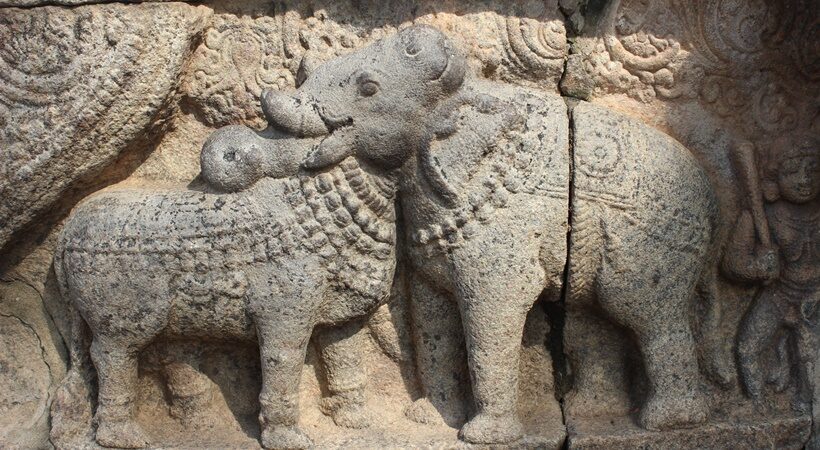The Airavatesvara Temple happens to be one of the three Great Living Chola Temples, 11th- and 12th-century temples constructed during the 1,500-year Chola dynasty in modern-day southern India’s state of Tamil Nadu. Built by the kings of the Chola Empire, the Great Living Chola Temples are testimonies to the brilliant achievements of the Cholas in architecture, sculpture, painting and bronze casting. Great Living Chola Temples is a world heritage site designation given to three temple complexes built during the 11th and 12th centuries, namely the Brihadisvara Temple at Thanjavur, Brihadisvara Temple at Gangaikonda Cholapuram, Airavatesvara Temple at Darasuram.
Built by the Chola king Rajaraja II (1143-1173 CE.), the Airavatesvara temple at Tanjavur is much smaller in size compared to the Brihadisvara temple at Tanjavur and Gangaikondacholapuram. The front mandapa known in the inscriptions as Rajagambhiran tirumandapam or the Royal Courtyard is unique as it was conceptualized as a chariot with wheels. The pillars of this mandapa are highly ornate. The elevation of all the units is elegant with sculptures dominating the architecture. A number of sculptures from this temple are considered masterpieces of Chola art. The temple is also known for the labelled miniature friezes depicting the events related to the 63 Nayanars (Saiva saints).
After more than 850 years, it remains a key surviving example of Chola architecture and craftsmanship, but what makes the temple all the more exceptional is that within this craftsmanship is one of the world’s oldest optical illusions. One of the interesting carvings dated between 1146 and 1170 depicts an elephant or a bull.

The bas-relief depicts the two separate animal bodies, with their heads overlapping and merged to become one shared aspect of the two figures. This results in an optical illusion. When the gaze of the viewer is fixed to the left, one can see a complete bull. However, if the gaze of the viewer is fixed to the left, one can clearly see an elephant, including a trunk. This optical illusion at Airavatesvara is one of the best preserves, however, other such examples can be seen at the Vitthala Temple in Hampi as well as the Rameswaram Temple.
This motif is thought by some to depict the half-male, half-female form of Lord Shiva known as Ardhanarishvar. Whereas others consider it to represent unity among the deities of the Hindu pantheon. Hence, the mystery surrounding the carving continues to confound all.



















